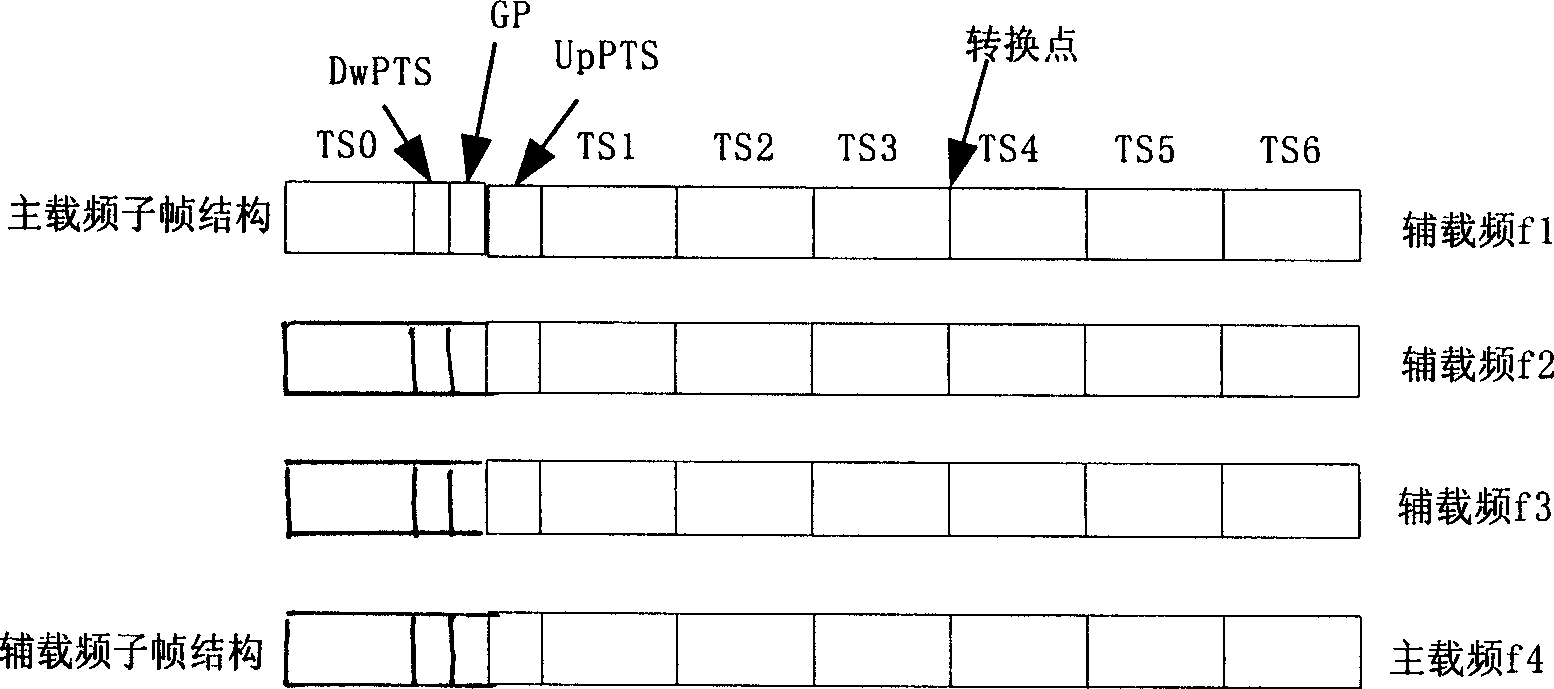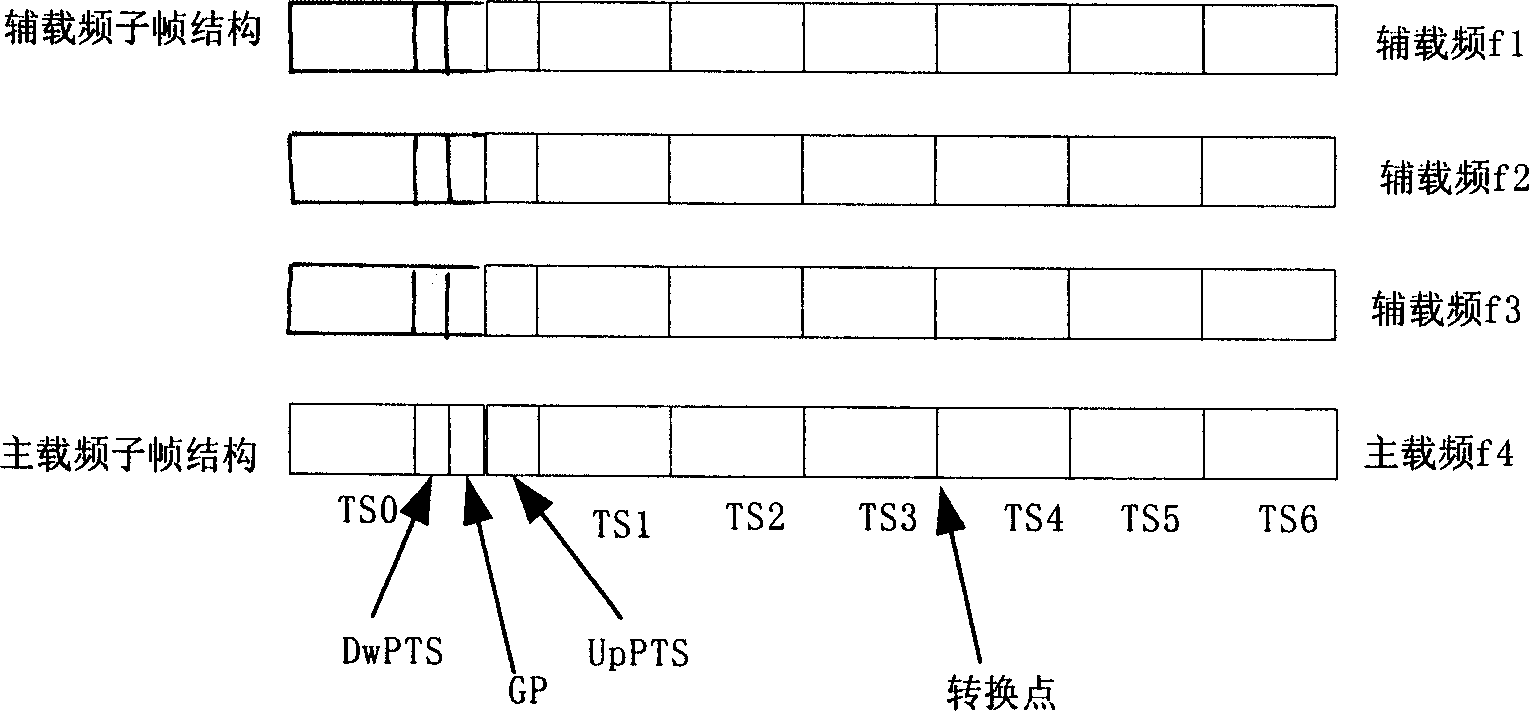Multi-carrier frequency cell major and minor carrier frequency adjusting method in TD-SCDMA system
A technology of TD-SCDMA and adjustment method, which is applied in the field of adjustment of primary and secondary carrier frequencies, can solve the problems of complex switching process and low probability of successful switching, and achieve the effect of reducing the burden
- Summary
- Abstract
- Description
- Claims
- Application Information
AI Technical Summary
Problems solved by technology
Method used
Image
Examples
Embodiment Construction
[0035] In a multi-carrier frequency cell, a cell is configured with multiple carrier frequencies (generally, carrier frequencies with the same coverage), and all carrier frequencies form a carrier frequency group G (F0, F1...Fn), and both primary and secondary carrier frequencies can receive new services. However, new user services in the current cell (referring to users who are newly powered on or switched to the cell) can only be accessed on the main carrier frequency. The main difference between the main carrier frequency and the auxiliary carrier frequency is that: the main carrier frequency TS0 (time slot 0) and DwPTS (downlink pilot time slot) time slots are active, and the auxiliary carrier frequency TS0 and DwPTS time slots are turned off. The UE reads broadcast messages and paging messages on the new main carrier frequency. That is to say, the signal is sent in the TS0 and DwPTS time slots of the main carrier frequency. The TS0 and DwPTS of the auxiliary carrier freq...
PUM
 Login to View More
Login to View More Abstract
Description
Claims
Application Information
 Login to View More
Login to View More - R&D
- Intellectual Property
- Life Sciences
- Materials
- Tech Scout
- Unparalleled Data Quality
- Higher Quality Content
- 60% Fewer Hallucinations
Browse by: Latest US Patents, China's latest patents, Technical Efficacy Thesaurus, Application Domain, Technology Topic, Popular Technical Reports.
© 2025 PatSnap. All rights reserved.Legal|Privacy policy|Modern Slavery Act Transparency Statement|Sitemap|About US| Contact US: help@patsnap.com



